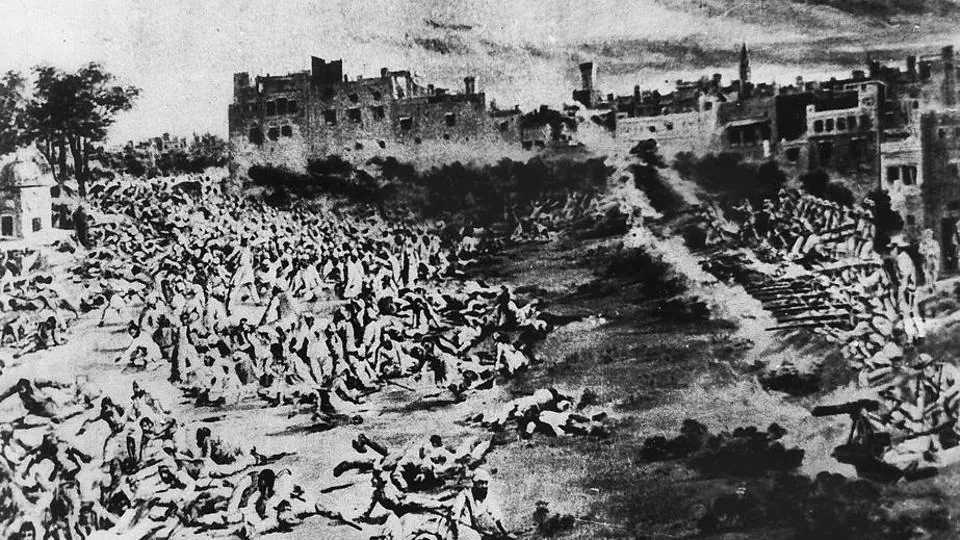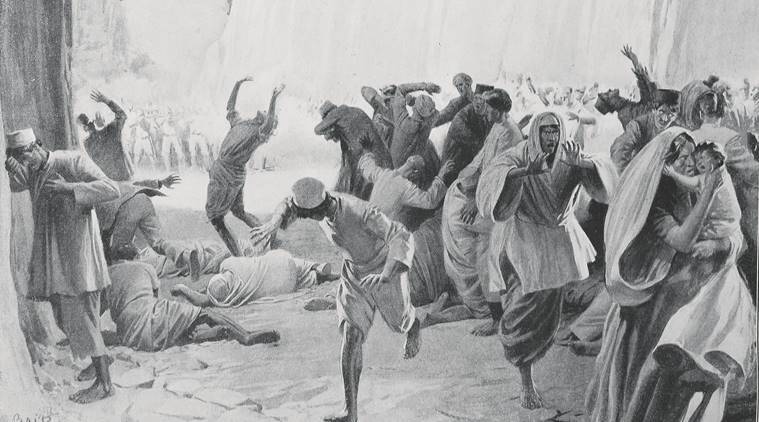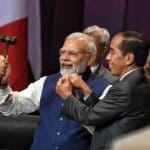A BRIEF STUDY ON JALLIANWALA BAGH MASSACRE
- The Jallianwala Bagh Massacre, sometimes referred to as the Massacre of Amritsar, took place on April 13, 1919, when British soldiers opened fire on a sizeable gathering of unarmed Indians in the Jallianwala Bagh in Amritsar, Punjab province (now in Punjab state), killing several hundred and injuring many more. It’s possible to spell Jallianwala Bagh as Jalliawala Bagh.
- In that, it permanently damaged Indo-British ties and served as a fore-runner to Mohandas (Mahatma) Gandhi’s full devotion to the cause of Indian nationalism and independence from Britain, it served as a turning point in modern Indian history.
- The British government in India passed a number of oppressive emergency laws designed to suppress dissident activity during World War I (1914–18). By the end of the war, the Indian people had high hopes that these restrictions would be lifted and India would be given more political freedom.
- There was a recommendation for restricted local self-government in the 1918 Montagu-Chelmsford Report, which was given to the British Parliament. Instead, the Indian government enacted The Rowlatt Act in the early months of 1919, which essentially extended the oppressive wartime regulations.
Widespread rage and unhappiness among Indians, especially in the Punjab region, followed the Act. Early in April, Gandhi issued a nationwide call for a one-day mass strike. On April 10, Amritsar witnessed violent protests that resulted in the deaths of several foreign nationals and the severely beating of a Christian missionary. The unrest was fueled by reports that important Indian leaders had been detained and expelled from the city.

THE MASSACRE
At least 10,000 men, women, and children congregated in the Jallianwala Bagh on the afternoon of April 13, which was almost entirely surrounded by walls and had just one exit. It is unclear how many people came to the city from the surrounding area to celebrate Baisakhi, a spring festival, and how many demonstrators were disobeying the ban on public gatherings. When Dyer and his soldiers showed up, they blocked the exit.
The soldiers fired on the gathering without warning, reportedly firing hundreds of shots until they ran out of ammunition. Although the exact number of victims of the carnage is unknown, one official source puts the death toll at 379, with another 1,200 or more suffering injuries. The military promptly departed from the area when they stopped firing, leaving the dead and injured behind.
Following the shooting, martial law was proclaimed throughout the Punjab, which included public floggings and other forms of humiliation. As word of the shooting and the British response circulated across the subcontinent, Indian fury increased. Rabindranath Tagore, a Nobel Prize-winning poet from Bengal, resigned the knighthood he had been awarded in 1915. Gandhi was originally reluctant to take action, but he quickly started planning the non-cooperation movement (1920–1922), which propelled him to prominence in the Indian nationalist cause. This was Gandhi’s first significant and persistent peaceful protest (Satyagraha) campaign.
The incident was investigated by the Hunter Commission, which was commissioned by the Indian government. In 1920, Dyer was censured for his conduct and required to resign from the military. Yet, there was a range of responses to the massacre throughout Britain. In a speech to the House of Commons in 1920, Sir Winston Churchill, who was the secretary of war at the time, denounced Dyer’s actions. However, the House of Lords honored Dyer and presented him with a sword bearing the inscription “Saviour of the Punjab.” Also, a sizable sum of money was donated by Dyer’s supporters and given to him. Amritsar’s Jallianwala Bagh location is now a national monument in the state of Punjab.
HISTORICAL SIGNIFICANCE OF THE MASSACRE
The Jallianwala Bagh Massacre is regarded as the most tragic episode in the history of the Indian Independence Struggle.
If there is any good to come out of this killing, it is that it exposed how intolerant and racially prejudiced the Brits were towards Indians.
Many people were outraged when the imperialist British oppression was revealed.
- Many moderates lost faith in the British, especially after seeing how the criminals almost got away with it.
- The Hunter Commission was established to look into the killings. However, the guilty were not subject to harsh punishment.
- Reginald Dyer, the primary perpetrator of the massacre, was only demoted from his current position in the army, rejected for a potential promotion, and prohibited from working in India; no trial was held as a result. In 1920, he was let go from his position.
- He passed away in 1927 after succumbing to illness.
Similar to how it gave birth to numerous other youthful freedom fighters who later fought for India’s independence.
On August 15, 1945, the British were forced to renounce their sovereignty over India, which they had hoped to rule for centuries, as a result of their valiant effort and sacrifice. Our future generations will be taught to fight injustice by being reminded of this awful period of history.
Other related posts:
The revolt of 1857 is also called the Sepoy Mutiny



